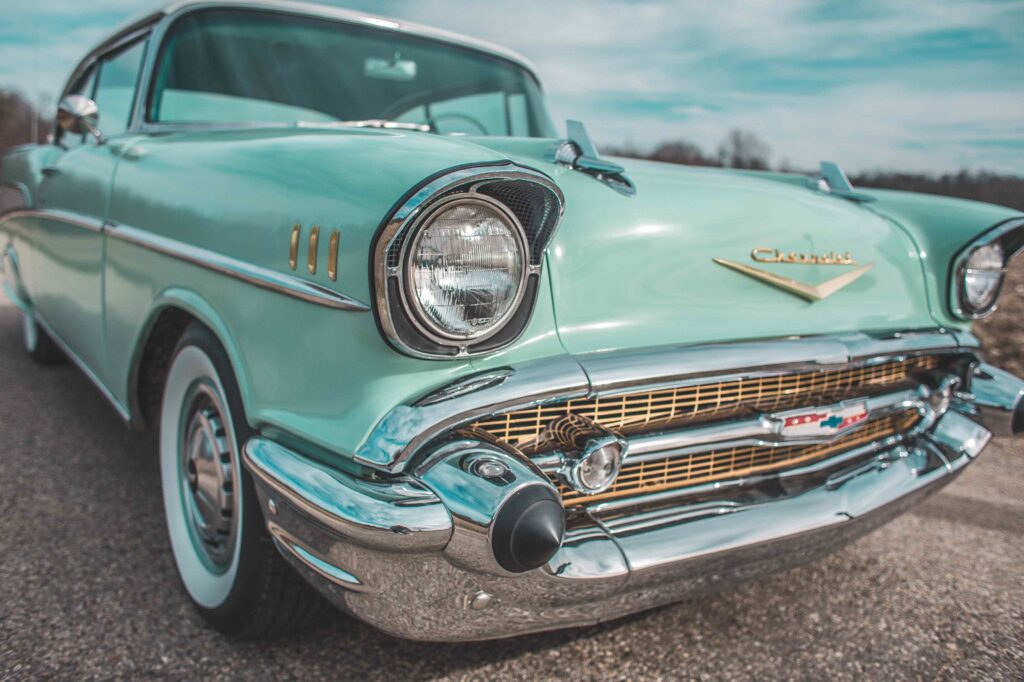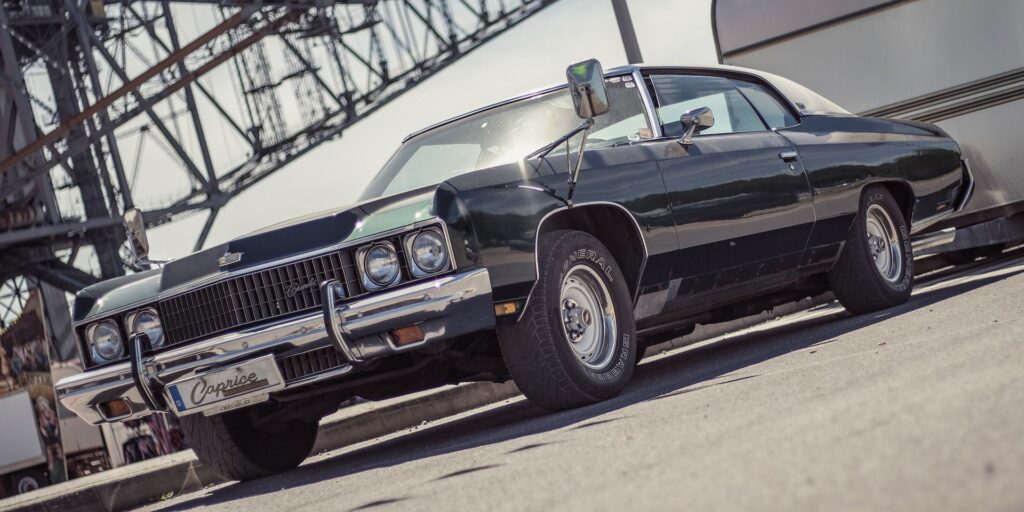M
uscle Cars in the 1960s: Their Origins, Decline, and Our Picks for the Greatest Muscle Cars
The 1960s were a period of tremendous advancement. The world was changing, and automobile design accelerated, building on the previous decade’s progress. Power outputs increased as well, particularly in the United States. The 1960s witnessed a confidence and a bolshy drive to move faster than the other guy, following the baby-boomer optimism of the 1950s.
A Brief History of Muscle Cars
The Classic Car Era produced 1960s muscle vehicles. They arose from the pent-up consumerist fervor that erupted after WWII. Overnight, it appeared that American car buyers preferred larger, quicker vehicles. Muscle cars debuted at a period when Detroit was attempting to combat an influx of foreign automobiles led by Volkswagen, which included Fiat, Renault, and Datsun (now Nissan), with new, light-weight models such as the Corvair, Falcon, and Valiant.
A muscle is like a car.if you want it to run well early in the morning, you have to warm it up.
– florence Griffith Joyner –
A mid-size car with a huge, powerful engine (usually, but not always, a V8) and customized trim, designed for maximal acceleration on the street or in drag racing competition, is referred to as a muscle car. It differs from sports cars, which were traditionally thought to be smaller two-seaters, or GTs, which are two-seat or 2+2 automobiles designed for high-speed touring and maybe road racing
Muscle cars are high-performance automobiles that were mostly produced in the United States between 1964 and 1971. During this time, these automobiles were referred to as supercars interchangeably (and more widely). The horsepower contest gave birth to the phrase “Muscle Car.” The Pontiac GTO and John Z. DeLorean are credited by the majority. The 1964 Pontiac Tempest GTO sparked the muscle car craze by establishing a distinct identity for the small-car, big-engine vehicle.
The project technically broke GM’s policy of limiting smaller cars to 330 cu. in. (5.4L) displacement, but it was far more popular than predicted, inspiring a slew of knockoffs from GM and its competitors, including well-known 1960s muscle car manufacturers like Ford.

Additionally, as the national highway system expanded and gasoline became more readily available, Americans want more power and speed. In 1964, Detroit gave in to public pressure and mounted huge block V-8 engines on mid-sized chassis.
The importance of the youth market was reflected in the general trend toward factory performance. One of the most appealing aspects of 1960s muscle cars was that they provided the emerging American car culture with a selection of vehicles that were priced just within reach of young people, had excellent street performance, and could also be raced. Increases in size, extra equipment, and plushness gradually eroded the cost of these 1960s muscle cars, prompting the inclusion of bigger and more powerful engines just to stay up with performance.
In response to the cost and weight increases, a secondary trend of “budget muscle” emerged in 1967 and 1968 in the form of the Plymouth Road Runner, Dodge Super Bee, and other stripped-down, lower-priced adaptations of classic 1960s muscle vehicles.
Even while actual muscle car sales were small in comparison to total Detroit production norms, they were valuable in terms of notoriety and bragging rights. They also aimed to draw youthful clients into showrooms, who would eventually purchase the normal editions of these mid-size muscle cars from the 1960s. Models like the AMC Rebel Machine, Chevrolet Chevelle COPO (Central Office Production Order), and Ford Torino Super Cobra Jet were factory altered to be turn-key drag racers. The heated competition resulted in a surge in horsepower that peaked in 1970, with some 1960s muscle vehicles producing up to 450 gross horsepower.

Unfortunately, during this time, the muscle cars’ performance quickly became a liability. The automotive safety movement, led by Ralph Nader, strictly regulated the sale of powerful 1960s muscle vehicles, especially to young customers. Efforts to tackle air pollution, on the other hand, forced Detroit to prioritize emission control over power. The situation was made worse by the 1973 OPEC oil embargo, which resulted in gasoline rationing. With all of these variables working against it, the market for 1960s muscle vehicles quickly vanished.
Pollution control devices that impeded performance were mandated by the Clean Air Act of 1970. The Muscle Car seemed doomed by the time Congress established the Average Fuel Economy (CAFE) requirement in 1978. While performance automobiles, reminiscent of 1960s muscle cars, began to resurface in the 1980s, escalating costs and complexity appear to have rendered the low-cost classic muscle car obsolete. Surviving 1960s muscle cars are now sought-after collectors, with some fetching sums comparable to exotic European sports cars.
The Camaro and Trans Am models were discontinued by GM in 2002 (together with the short-lived 1994-1996 Chevrolet Impala SS), leaving the Ford Mustang as the last surviving semi-muscle vehicle made in the United States, with Chrysler discontinuing their muscle cars in 1974.

Muscle Cars in the 1960s: Early and Late Developments
With the 1960 Chrysler 300F, the era of 1960s performance automobiles seemed to be coming to an end. During the early years of factory performance, automakers saved their most powerful engines for their most expensive and largest vehicles. The beautiful and unique “letter-series” machines typified early Chrysler muscle cars of the 1960s. The 1955 C-300, with its 300-bhp Hemi-head V-8, was the first of them. With distinctive decoration and a sporty interior that included four bucket-style leather seats and a full-length dashboard, the 1960 Chrysler 300F continued the legacy of power.
When the Thunderbird debuted in the 1960s as a direct competitor to the Corvette, Ford changed the car’s direction from its two-seater roots. However, sales were strong, proving the T-popularity bird’s in 1960. More than twice as many of these 1960s muscle vehicles were sold as the 1958 model. Unitary construction was introduced in 1958 to improve handling, but it also included a dropped floor pan to decrease the ride height and, as a result, the center of gravity, resulting in a more stable ride for these 1960s muscle cars. The car was equipped with coil springs all around, and while it wasn’t as sporty as the original T-birds, it was quieter and more refined. However, it was one of the fastest muscle cars of the 1960s, which helped it sell well in those horsepower-hungry times.
Chevrolet debuted the XP700 Corvette experimental car in 1960. The 1962 Corvette was a high-performance automobile with a strong V8 engine that was optional. Fuel injection and aluminum cylinder heads were also available on some of them. By the standards of the period, this was a quick car. For its time, the Corvette was a revolutionary American automobile.
The Chevrolet Camaro had its North American début in 1967. This was GM’s response to the Ford Mustang. The Camaro, like the Mustang, was classified as an intermediate sports car, or muscle car, despite being a compact car (by 1960s standards). It was one of the most popular muscle cars of the 1960s.
The 1968 Plymouth Road Runner established the budget-muscle car segment and was one of the most important muscle cars of the 1960s.

















